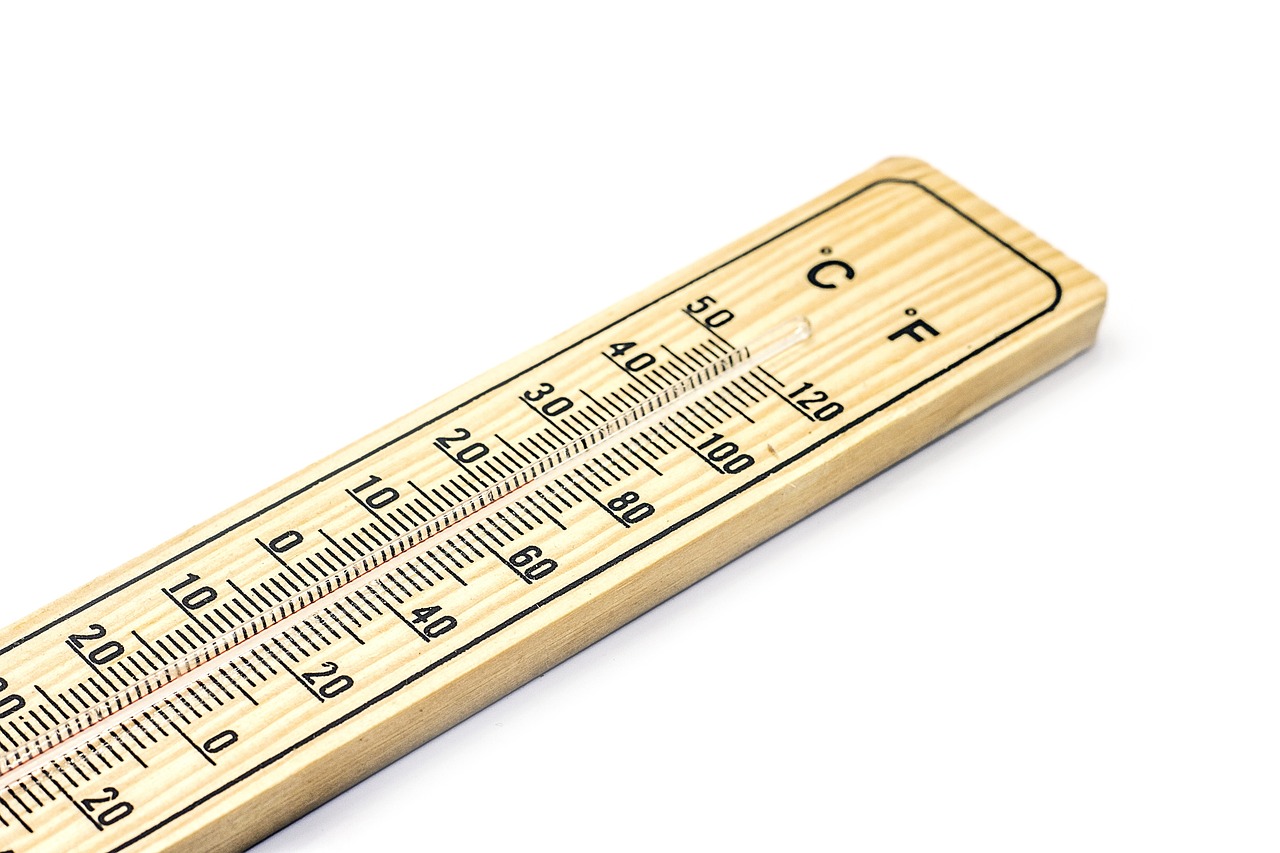°C to °F Calculator - Convert Celsius (°C) to Fahrenheit (°F).
Conversion Result:
Our Celsius to Fahrenheit Converter is a comprehensive temperature conversion tool designed to provide instant, accurate conversions between the world's two most commonly used temperature scales. Whether you're cooking international recipes, analyzing weather data, conducting scientific experiments, or simply satisfying your curiosity about temperature differences, this calculator delivers precise results with detailed explanations and practical applications.
Understanding temperature conversion is essential in our globally connected world. From cooking and baking to scientific research, weather analysis, and international travel, the ability to convert between Celsius and Fahrenheit scales is a valuable skill that serves countless practical purposes in daily life and professional applications.
How to Use the Temperature Converter
Our intuitive converter makes temperature conversion effortless:
- Enter Temperature: Input the temperature value you want to convert
- Select Scale: Choose whether you're converting from Celsius or Fahrenheit
- Convert: Click the "Convert" button for instant results
- View Result: See the converted temperature with precise calculations
- Understand Context: Use our reference charts and examples for practical understanding
Understanding Temperature Scales: The Science Behind Measurement
Temperature scales are fundamental tools for measuring thermal energy and heat intensity. The two most widely used scales each have unique origins, applications, and advantages in different contexts.
The Physics of Temperature
Temperature represents the average kinetic energy of particles in a substance. As particles move more rapidly, temperature increases; as they slow down, temperature decreases. This fundamental concept underlies all temperature measurement systems.
What is Celsius? - The International Standard
The Celsius scale, also known as centigrade, was created in 1742 by Swedish astronomer Anders Celsius. This scale has become the international standard for scientific and everyday temperature measurement in most of the world.
Celsius Scale Characteristics:
- Freezing Point: 0°C (water freezes into ice)
- Boiling Point: 100°C (water turns to steam at sea level)
- Scale Division: 100 degrees between freezing and boiling points
- Scientific Basis: Based on fundamental properties of water
- Global Usage: Used by nearly all countries worldwide
- Decimal System: Integrates perfectly with metric measurements
Historical Context and Development
Originally, Celsius defined 0° as the boiling point and 100° as the freezing point of water. The scale was later inverted to its current form, making it more intuitive for everyday use. The Celsius scale's logical structure and scientific foundation led to its adoption as the standard temperature measurement in the International System of Units (SI).
What is Fahrenheit? - The American Standard
The Fahrenheit scale was developed in 1724 by German physicist Daniel Gabriel Fahrenheit. While used primarily in the United States, this scale offers greater precision for everyday temperature ranges commonly experienced by humans.
Fahrenheit Scale Characteristics:
- Freezing Point: 32°F (water freezes into ice)
- Boiling Point: 212°F (water turns to steam at sea level)
- Scale Division: 180 degrees between freezing and boiling points
- Human-Centered: Originally based on human body temperature
- Precision: Smaller degree increments for weather temperatures
- Cultural Usage: Primarily used in the United States and a few other countries
Fahrenheit's Original Design
Fahrenheit originally defined his scale using three reference points: the temperature of a mixture of ice, water, and salt (0°F), the freezing point of water (32°F), and human body temperature (originally set at 96°F, later adjusted to 98.6°F). This human-centric approach made the scale practical for everyday weather and medical applications.
Global Usage and Applications
Celsius Applications Worldwide
- Scientific Research: Universal standard in laboratories and research facilities
- Weather Reporting: Used in most countries for meteorological data
- Cooking International: Recipes and cooking temperatures in most countries
- Medical Applications: Body temperature monitoring globally (except US)
- Industrial Processes: Manufacturing and quality control standards
Fahrenheit Applications
- United States Weather: Daily weather reports and forecasts
- American Cooking: Oven temperatures and recipe instructions
- Medical Practice: Body temperature measurement in US healthcare
- HVAC Systems: Heating and cooling system settings in America
- Industrial Applications: Some specific industries and legacy systems

Using the Celsius to Fahrenheit Converter
It's super easy to use our converter:
- Type your starting temperature into the box, either Celsius or Fahrenheit.
- Click the convert button.
- The converter will automatically calculate and display the equivalent temperature in the other unit!
Temperature Conversion Formulas: Mathematical Precision
Temperature conversion between Celsius and Fahrenheit requires precise mathematical formulas that account for the different zero points and scale intervals of each system.
The Mathematical Relationship
The relationship between Celsius and Fahrenheit stems from their different reference points and scale divisions:
- Celsius: 100 degrees between freezing (0°C) and boiling (100°C)
- Fahrenheit: 180 degrees between freezing (32°F) and boiling (212°F)
- Ratio: 180/100 = 1.8 (or 9/5)
- Offset: 32°F difference at the freezing point
Primary Conversion Formulas
Celsius to Fahrenheit
Formula: °F = (°C × 1.8) + 32
Alternative: °F = (°C × 9/5) + 32
Step-by-Step Process:
- Multiply the Celsius temperature by 1.8 (or 9/5)
- Add 32 to the result
- The final number is the Fahrenheit equivalent
Fahrenheit to Celsius
Formula: °C = (°F - 32) × 5/9
Decimal: °C = (°F - 32) × 0.5556
Step-by-Step Process:
- Subtract 32 from the Fahrenheit temperature
- Multiply the result by 5/9 (or 0.5556)
- The final number is the Celsius equivalent
Detailed Conversion Examples
Example 1: Room Temperature
Convert 25°C to Fahrenheit:
°F = (25 × 1.8) + 32 = 45 + 32 = 77°F
Verification: (77 - 32) × 5/9 = 45 × 5/9 = 25°C ✓
Example 2: Cooking Temperature
Convert 180°C to Fahrenheit:
°F = (180 × 1.8) + 32 = 324 + 32 = 356°F
Verification: (356 - 32) × 5/9 = 324 × 5/9 = 180°C ✓
Example 3: Weather Temperature
Convert 68°F to Celsius:
°C = (68 - 32) × 5/9 = 36 × 5/9 = 20°C
Verification: (20 × 1.8) + 32 = 36 + 32 = 68°F ✓
Practical Temperature Conversion Applications
Cooking and Baking Applications
- Recipe Conversion: Adapting international recipes for local ovens
- Food Safety: Ensuring proper cooking temperatures for food safety
- Baking Precision: Accurate oven temperatures for perfect results
- Candy Making: Critical temperature control for confections
Scientific and Medical Uses
- Laboratory Research: Converting between measurement systems
- Medical Monitoring: Body temperature analysis and fever assessment
- Climate Studies: Comparing global temperature data
- Industrial Processes: Quality control and manufacturing specifications
Travel and Weather Applications
- Weather Understanding: Interpreting international weather reports
- Travel Planning: Packing appropriate clothing for different climates
- Climate Comparison: Understanding regional temperature differences
- Seasonal Preparation: Planning for seasonal temperature changes
Memory Aids and Quick Conversion Tricks
Mental Math Approximations
- Celsius to Fahrenheit: Double it and add 30 (rough estimate)
- Fahrenheit to Celsius: Subtract 30 and halve it (rough estimate)
- Body Temperature: 37°C ≈ 98.6°F (exactly 98.6°F)
- Comfortable Room: 20°C ≈ 68°F (exactly 68°F)
Common Reference Points
- Absolute Zero: -273.15°C = -459.67°F
- Dry Ice: -78.5°C = -109.3°F
- Freezer: -18°C = 0°F
- Water Freezes: 0°C = 32°F
- Room Temperature: 20°C = 68°F
- Body Temperature: 37°C = 98.6°F
- Water Boils: 100°C = 212°F
Celsius to Fahrenheit Chart:
| Celsius | Fahrenheit |
|---|---|
| 0°C | 32°F |
| 10°C | 50°F |
| 20°C | 68°F |
| 30°C | 86°F |
| 40°C | 104°F |
| 50°C | 122°F |
| 100°C | 212°F |
| 200°C | 392°F |
Fahrenheit to Celsius Chart
| Fahrenheit | Celsius |
|---|---|
| 32°F | 0°C |
| 50°F | 10°C |
| 68°F | 20°C |
| 86°F | 30°C |
| 104°F | 40°C |
| 122°F | 50°C |
| 140°F | 60°C |
| 158°F | 70°C |
| 176°F | 80°C |
| 194°F | 90°C |
| 212°F | 100°C |
Other Similar Calculators
Check out other calculators that are similar to this one.
Frequently Asked Questions
Key Takeaways
- Basic Formulas: °F = (°C × 1.8) + 32 and °C = (°F - 32) × 5/9
- Reference Points: Water freezes at 0°C/32°F and boils at 100°C/212°F
- Global Usage: Celsius is international standard; Fahrenheit primarily in US
- Practical Applications: Essential for cooking, travel, science, and weather understanding
- Mental Math: Double Celsius and add 30 for rough Fahrenheit estimate
- Precision: Use exact formulas for accuracy in scientific and cooking applications
- Context Matters: Choose appropriate scale based on your location and application
Find Calculator
Popular Calculators
Other Calculators
